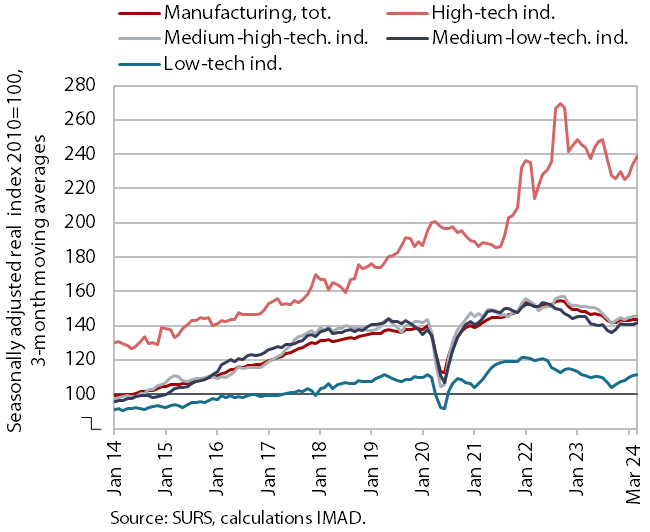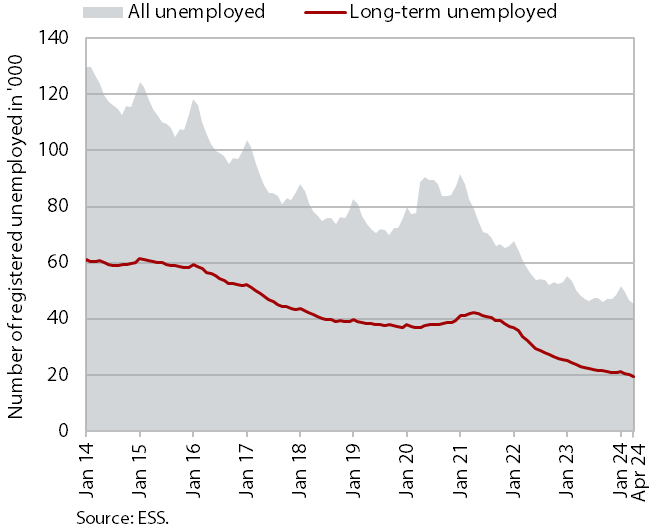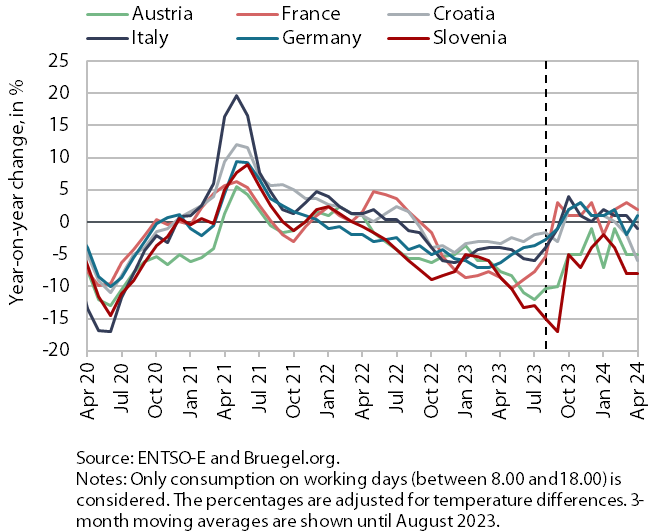Charts of the Week
Charts of the week from 6 to 10 May 2024: manufacturing, number of registered unemployed and electricity consumption
In April, the monthly decline in the number of registered unemployed was similar to the previous two months. Total unemployment fell by 7% year-on-year, while the number of long-term unemployed fell by 15%, against the backdrop of labour shortages. Electricity consumption in April was 8% lower year-on-year. Manufacturing production declined in March, while it was higher in the first quarter than in the fourth quarter of 2023; the year-on-year decline was thus less pronounced than in the previous quarter.
Manufacturing, March 2024

Despite a decline in March, manufacturing production in the first quarter increased in all industry groups according to technology intensity, while the year-on-year decline was less pronounced compared to the fourth quarter of last year. The relatively sharp year-on-year decline in March (-6.1%) contributed to a 1.8% decline in manufacturing production in the first quarter (growth in the first two months was 0.7). Manufacturing output was lower year-on-year, particularly in some less technology-intensive sectors. In the energy-intensive manufacture of other non-metallic mineral products n.e.c., it fell by almost a fifth, while in the energy-intensive chemical industry it fell by 8.2% and in the wood and furniture industry and in the repair and installation of machinery and equipment by around 10%. Industries that surpassed last year’s first-quarter levels mostly recorded modest growth of up to about 4%. The only activities where growth was higher were manufacturing (14.5%) and the textile industry (8.3%).
Number of registered unemployed, April 2024

According to the seasonally adjusted data, the monthly decline in the number of registered unemployed was similar in April (1.1%) as in the previous two months. According to original data, 45,219 people were unemployed at the end of April, 7% less than a year ago. Amid labour shortages, the number of long-term unemployed (more than one year) fell by 14.8% year-on-year at the end of April, while the number of unemployed over 50 fell by 9.2%.
Electricity consumption, April 2024

Electricity consumption in April was 8% lower year-on-year. This decline was partly attributed to numerous power outages due to maintenance works and snowfall. Among Slovenia’s main trading partners, lower consumption compared to April 2023 was recorded by Austria (-5%), Croatia (–6%) and Italy (-1%), while consumption was higher year-on-year in Germany (1%) and France (2%).
